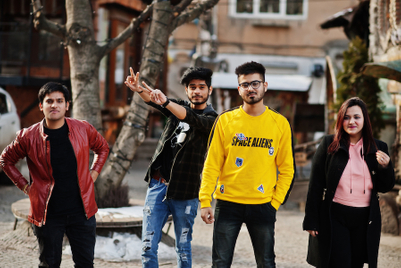
As B2B2C brands in India navigate the dual challenge of appealing to both intermediaries and end-users, marketers are crafting unified strategies that align trade incentives with consumer brand pull—without fragmenting the message. These strategies are designed to balance trade and consumer objectives in a single campaign, especially when intermediaries like contractors, distributors, or agents double as influencers in purchase decisions.
Recognising the pivotal role that intermediaries play in shaping consumer preferences, especially in categories like water tanks, plastic goods, and financial services, brands like Sintex and Shreeji Plastic are using a mix of martech tools, data platforms, and visual storytelling to maintain message consistency while driving performance across the funnel—from lead generation to final conversion.
Building the dual narrative
During the launch of its Pure+ Antimicrobial Water Tanks, Sintex ran a two-pronged marketing campaign. The consumer-facing arm focused on health benefits, touting features like FDA-approved food-grade material and antimicrobial protection. In tandem, its trade communications educated contractors and plumbers about the value of promoting health-first messaging alongside traditional decision-making factors like durability.
This cohesion between consumer benefit and intermediary education is no accident. Yashovardhan Agarwal, director of Sintex and managing director of Welspun BAPL, explains, “We relied on a simple combination of CRM system, social media, and in-app marketing to connect, educate and engage with our contractor and plumber partners. Each campaign was aimed at creating a belief or attitude shift amongst our partners, which then results into proportionate business results.”

Central to Sintex’s strategy is its QR-code based loyalty system. According to Agarwal this gave the company real-time feedback about the impact of its marketing programs amongst its contractor and plumber partners. This response also helped it to create new cohorts amongst them and fresh communication for those cohorts that would ultimately help them become more effective in their day-to-day working.
This use of feedback loops, audience segmentation, and dynamic communication illustrates how even traditionally low-tech sectors are leveraging martech to refine their go-to-market strategies. B2B2C brands can also collaborate with martech platforms to activate real-time segmentation, omnichannel campaign deployment, and unified communication strategies that effectively target both intermediaries and end users. With AI-driven personalisation and customer journey mapping, each recipient is served content that resonates with their preferences and behaviour.
Solutions from martech providers like WebEngage integrate smoothly with CRM and eCommerce ecosystems, ensuring consistent data flow. Their campaign orchestration tools enable the creation of contextual, cross-channel workflows—allowing brands to deliver coherent, strategically aligned messaging that drives both partner participation and consumer engagement, without diluting the core narrative.
Expanding the base: Beyond retention to acquisition
While retention remains critical, B2B2C brands are pushing the envelope on acquisition. Mehul Doshi, founder of Shreeji Plastic, whose products are distributed across Maharashtra, Gujarat, and Karnataka, notes that the brand is working on “two parallel tracks—broadening our distributor base while also strengthening engagement with long-standing partners.” According to him, while loyalty initiatives are useful for keeping the core engaged, “growing the network continues to be a priority for sustained reach and impact.”
For Sintex, visibility plays a key role in broadening their intermediary network. Agarwal says, “Our recent partnership with the Tata Women's Premier League (WPL) as an associate sponsor has increased brand visibility, attracting new partnerships and intermediaries across India.” In addition, the company conducts frequent training workshops to onboard new partners—ensuring they are not only motivated but also equipped to represent the brand effectively.
These real-world touchpoints are backed by scalable digital systems that track lead quality and conversion metrics—often in real time.
Intermediaries as brand evangelists
The age of merely handing out brochures is long gone. Brands are now investing in turning intermediaries into capable brand storytellers. This goes beyond training—it’s about crafting tools that are not just informative, but emotionally resonant.
Agarwal shares, “Our comprehensive training programs cover product features, importance of selecting a healthy water storage tank solution, installation techniques, and customer service best practices. We are in the process of deploying AI-based platform that will allow our field team to create personalized promotional video for every intermediary, thereby giving them the voice and respect that they deserve.”
Doshi echoes this sentiment, “Given that a large segment of our distributors operate in semi-urban and rural regions, visual formats—like sample kits, how-to demos, and regionally tailored video content—are especially effective in driving recall and advocacy.” For brands like Shreeji Plastic, empowering their distribution network with such tools is essential for consistent and persuasive messaging at the last mile.
Unified engagement, zero message dilution
What makes this dual communication strategy viable is the use of robust martech platforms that can cater to both intermediaries and consumers simultaneously. WebEngage’s Customer Data Platform (CDP) is one such solution.

Ankur Gattani, the company’s chief growth officer, explains, “Our business and consumer marketing objectives are weighed against each other with one engagement strategy. With omnidirectional engagement, multi-channel campaign delivery, and immediate segmentation, the platform enables intermediate and end-user targeted messaging.”
WebEngage’s system includes AI-powered personalization and journey orchestration, supported by CRM and eCommerce integrations. “This strategy ensures messaging to be consistent with resultant consumer brand pull and intermediary activity without having to break down the core message,” says Gattani.
Venkat Thangi, senior director of marketing at MoEngage, expands on this complexity. According to him, it isn't just about sending personalised messages. Instead, it's about understanding the distinct roles, motivations, and journeys of each stakeholder group and weaving them into a cohesive engagement strategy.
MoEngage’s platform has delivered significant ROI for brands like Policybazaar, where segmentation and push notification campaigns led to a 100% year-over-year increase in Annual Premium Equivalent (APE). Similarly, the martech provider claimed that a small finance bank using its services reported stronger engagement across its mobile and digital banking platforms after deploying hyper-personalised outreach.
From funnel to finish: KPIs that matter
It’s not enough to build awareness—what counts is the ability to measure results. MoEngage’s work with OnlineTyari is a case in point. Thangi shares, “By implementing omnichannel engagement strategies and utilising our analytics, the online examination platform achieved a 400% increase in conversions and an 8.3% conversion rate within two months.”
Such success, he notes, comes from “understanding user behaviour and intent at a granular level and tailoring communication accordingly across the entire funnel.” Personalisation is not just a bonus—it’s become a fundamental requirement for competitive advantage.
Data is now central to driving meaningful engagement, not just measuring it. Personalisation has become essential for staying competitive. Brands that don’t harness analytics to decode audience needs and tailor experiences will fall behind—making it crucial to build strong data systems, analytical muscle, and a mindset of constant iteration.
WebEngage, too, operates across the entire user journey. Gattani notes, “From the moment traffic lands on your platform to app install, registration, content engagement, first transaction, or joining the loyalty program—we have visibility and intervention strategies across all these layers.”
The WhatsApp factor and the rural imperative
With tier 2 and 3 towns representing India’s next growth wave, scalability must coexist with personalisation—especially across mobile-native, low-tech ecosystems. This is where channels like WhatsApp and SMS still reign.
Martech platforms, hence, enable scaled, tailored communication by tapping into tools like Infobip for WhatsApp and Twilio for SMS, ensuring even less tech-savvy intermediaries are engaged meaningfully. Smart segmentation and AI-driven customisation keep messages relevant and human. Using private messaging partners adds agility and preserves authenticity across interactions.

But there’s a fine line between engagement and intrusion and martech platforms aim to walk that line. Thangi notes that their success lies in “creating value-aligned experiences for both groups. This requires a deep understanding of the intermediary’s role in the customer journey and providing them with content, tools, and incentives that directly contribute to their success.” In practical terms, this means reducing message fatigue, localising content, and using predictive analytics to time campaigns appropriately.
What emerges clearly from these use cases is that the traditional linear brand-to-consumer model is giving way to an ecosystem-based approach. Martech today enables brands to orchestrate contextual interactions across this value chain—ensuring that each node, whether distributor or end-user, plays a complementary role in driving growth.
As Gattani puts it, “The strategy is no longer about choosing between trade and consumer marketing. It’s about finding common ground in data, platforms, and messaging that allows both to flourish—without compromise.”
This balance is not easy, but it’s becoming essential. In a market where every campaign is expected to do more with less—build brand, drive demand, enable partners, and deliver ROI—martech may be the only layer that ensures all these parts move in sync.



.jpg&h=334&w=500&q=100&v=20250320&c=1)
+(900+x+600+px).jpg&h=334&w=500&q=100&v=20250320&c=1)

+(900+x+600+px)+(3).png&h=334&w=500&q=100&v=20250320&c=1)

.jpg&h=334&w=500&q=100&v=20250320&c=1)



.jpg&h=268&w=401&q=100&v=20250320&c=1)




.jpg&h=268&w=401&q=100&v=20250320&c=1)


